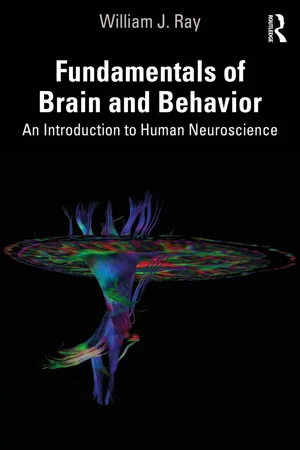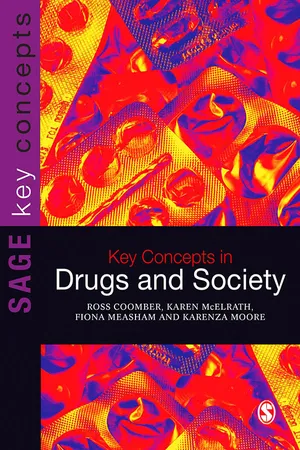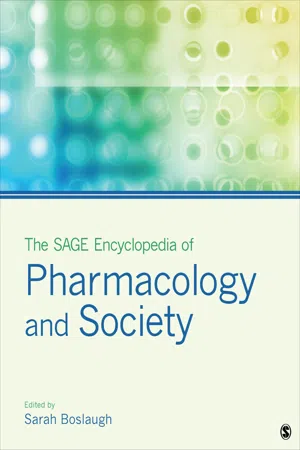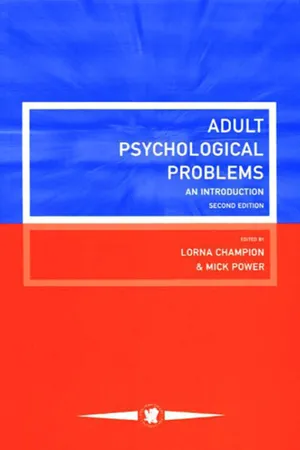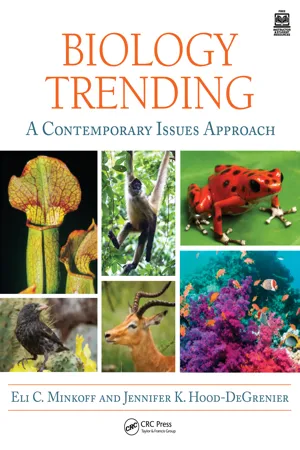Psychology
Psychoactive Drugs
Psychoactive drugs are substances that affect the central nervous system, leading to changes in mood, behavior, perception, and consciousness. These drugs can be categorized as stimulants, depressants, hallucinogens, or opioids, and they have the potential to cause addiction and dependence. The use of psychoactive drugs can have both therapeutic and recreational effects on individuals.
Written by Perlego with AI-assistance
Related key terms
Related key terms
1 of 4
Related key terms
1 of 3
8 Key excerpts on "Psychoactive Drugs"
- eBook - ePub
Essential guide to the Psychedelic Renaissance
All you need to know about how psilocybin, MDMA and LSD are revolutionizing mental health and changing lives
- Antón Gómez-Escolar(Author)
- 2022(Publication Date)
- ArgoNowta(Publisher)
1 , are those keys that, like our internal neurotransmitters, fit into the locks of our neurons (or act on our internal keys).Therefore, if we want to be more precise when referring to substances such as alcohol, cannabis (marijuana), cocaine or LSD ("acid"), ideally, we would not just talk about drugs, which is a very broad term, but "psychoactive substances" or "Psychoactive Drugs." These terms are essentially synonyms. In addition to being synonyms, they would be the most precise terms to use. However, to make it easier for the reader and keeping with the usual social lexicon, throughout this book we will use the word "drug" as an abbreviated form of "psychoactive drug" or "psychoactive substance."Far from technical definitions, drugs, whether legal, illegalized or restricted for medical use, are fundamentally known for their effects on the mind and behavior, since they are tools that not only stimulate or relax us, they allow us to access other altered or non-ordinary states of consciousness.The science that studies the effects of these substances on the mind – cognition, emotions, thoughts, sensations, motivations and behaviors – is known as "psychopharmacology."Sensory isolation tank, where you float in body-temperature salt water in the dark, in silence, to deprive the brain of any sensory input and achieve altered states of consciousness. (Floatguru, CC BY-SA 3.0 <https://creativecommons.org/licenses/by-sa/3.0>, via Wikimedia Commons).Fortunately, psychoactive substances are not the only tool we have to access these altered states of consciousness. There are various ancient and modern practices that allow us to achieve states that can resemble those obtained through psychoactive substances, such as: meditation, breathing, fasting, extreme sports, sleep deprivation, sensory isolation chambers2 , or lucid dreams3 - eBook - ePub
- Norman Claringbull(Author)
- 2011(Publication Date)
- Learning Matters(Publisher)
HAPTER 8 Prescription drugs, recreational drugs and addictionCORE KNOWLEDGE- Any substance (legal or illegal) that alters the mind or affects the mood is said to be ‘psychotropic’ or ‘mind-altering’. Psychopharmacology is the study of the ways in which psychotropic substances affect the mind.
- Therapists usually find that the types of psychotropic drugs most likely being prescribed for their clients are:
- – antidepressants;
- – anxiolytics (anti-anxiety drugs);
- – antipsychotics;
- – mood stabilisers.
- Drug/substance dependency can usefully be split into three types:
- – Type 1: Rebound – temporary resumption of symptoms on withdrawal;
- – Type 2: Craving – a strong appetite for the substance in question;
- – Type 3: Therapeutic – permanent physiological changes.
INTRODUCTION
BACKGROUND
People have been using Psychoactive Drugs throughout the ages (Siegal, 2005 ). They still do; they probably always will. These ‘mind-benders’ have long been used for religious purposes, for cultural reasons, and just for plain old fun. Any substances, legal or illegal, that affect the mind are Psychoactive Drugs. These include the two that are the biggest killers – the ones that do the most harm worldwide, the ‘daddies of them all’ – alcohol and nicotine. By the way, technical words such as ‘psychotropic’, ‘psychoactive’ and ‘psycho-affective’ mean more or less the same thing – they alter your mood.Of course, all drugs – psychoactive medications included – are poisons. They can harm us. To get round that unpleasant fact, we have to balance the expected toxic effects of a drug against its hoped-for beneficial effects. We then decide if we want to use it and how we want to use it. Sometimes we make the wrong choice. Sometimes that might be because we do not know any better. In far too many cases, researchers are still trying to find out exactly how particular drugs actually work, and these include the psychiatric drugs (Cottingham, 2009 - eBook - ePub
Mad Science
Psychiatric Coercion, Diagnosis, and Drugs
- Stuart A. Kirk(Author)
- 2017(Publication Date)
- Routledge(Publisher)
7 From Drugs to Medications— and BackIntroduction
Since time immemorial, humans have used substances that noticeably alter mood, consciousness, and behavior. Today we call these substances psychoactive or psychotropic drugs1 . The main psychoactive compounds in use throughout the world roughly until the last decade of the nineteenth century were alcohol, coffee, tea, tobacco, opium, cannabis, coca, iboga, kola, khat, as well as countless species of mushrooms. People used these and other Psychoactive Drugs to work, to relieve pain, to induce sleep, to stay awake, to fraternize, to endure sadness and loss, to experience euphoria or joy, to reach or heighten states of transcendence and spiritual contemplation, and to perform religious rituals (Meyers, 1985). These manifold uses indicate that Psychoactive Drugs touch directly and deeply on what it means to live as a human being. Put another way, Psychoactive Drugs have helped many human beings to bear, to make meaning of, to celebrate, or to temporarily escape their circumstances. Observing the universality of psychoactive drug use among humans, Andrew Weil (1970) wondered whether it reflected an inborn drive to alter one’s consciousness.If psychoactive drug use did not provide the user or the user’s group with some perceived benefit in enduring or enjoying life, it seems hardly possible that it would continue, century after century, regardless of migratory patterns or the nature and pace of social and cultural changes. This is an especially compelling consideration, given that the dangers of psychoactive drug use were never lost on their users. As far as we can determine from observations of indigenous peoples around the world, use of Psychoactive Drugs in premodern societies typically involved communal preparations, elaborate precautions, and rituals that served simultaneously to elevate and restrain drug taking (Naranjo, 1979). In our contemporary society, precautions against much of psychoactive drug use still involve informal rites of passage in families and peer groups, legal drinking ages, as well as formal sanctions, such as laws against impaired driving and public inebriety. Increasingly, however, precautions have involved the transfer of authority and responsibility for psychoactive drug use onto the physician and the addiction specialist. The consequences of this shift have transformed users’ motives to use drugs into diseases or disorders, the use of drugs into a treatment, and the user of drugs into a patient. Of the utmost importance, the physician writes a prescription that allows licit access to various Psychoactive Drugs. (As more and more “healthy” people want to use certain Psychoactive Drugs available only by prescription, the rationale for the medical prescription system might be strained beyond credibility, but we are getting ahead of our story.) - eBook - ePub
Fundamentals of Brain and Behavior
An Introduction to Human Neuroscience
- William J. Ray(Author)
- 2024(Publication Date)
- Routledge(Publisher)
Siegel, 2001 ). Thus, someone can experience an overdose by first developing tolerance to a drug in a familiar situation. This tolerance may be associated with an increase in the amount of the drug to counter the effects of tolerance. However, if the person uses the same amount of the drug in a novel situation, an overdose can be experienced. The result is that the overdose is more associated with the external and internal cues of the situation than the actual amount of the drug used. Thus, to be effective, drug treatments need to consider both the external and internal cues associated with the use of the drug by extinguishing these associations.Thought Question: What are three specific takeaways from this feature that help you understand drug addiction and its treatment better?Concept Check
- Throughout our evolutionary history, humans have ingested psychoactive substances. Give a brief timeline of what we know about that history including dates, locations, and substances.
- What can we say about the use of both legal and illegal psychoactive substances in the US?
- What can animal studies tell us about the power of psychoactive substances on the individual?
- What are the steps in the pattern of addiction, and what drives the process from one step to the next?
- There is no one answer to what causes addiction, but what are three important factors that should be considered?
- How can drugs change your brain? What is the role of dopamine in the effect of psychoactive substances?
Major Psychoactive Substances
Traditionally, psychoactive substances are discussed in terms of their effects on the central nervous system. Three broad categories are depressants, stimulants, and hallucinogens. Depressants such as alcohol and barbiturates reduce the activity of the central nervous system. This reduction of activity can be seen overall as when a person falls asleep after drinking alcohol or more localized as when reduction in frontal lobe activity reduces the inhibitions experienced by the person. Stimulants, on the other hand, increase the activity of the central nervous system. Common stimulants include amphetamines, caffeine, nicotine, cocaine, and opiates such as morphine. The class of Psychoactive Drugs that has the most influence on the central nervous system is hallucinogens (Schartner, Carhart-Harris, Barrett, Seth, & Muthukumaraswamy, 2017 - eBook - ePub
- Ross Coomber, Karen McElrath, Fiona Measham, Karenza Moore(Authors)
- 2013(Publication Date)
- SAGE Publications Ltd(Publisher)
Section IIDrug Effects
Passage contains an image
15Drug Effects: Drug, Set and Setting
A drug effect is what happens to the mind and/or body of an individual that uses it. The actual effect of a taking a drug however is not as simple as (1) the drug causes (2) the behaviour/psychedelic effect/the harm. A fuller understanding of drug effects goes beyond simply looking at the drug in question, the dose used and the host body – a bio-pharmacological perspective – and also needs to consider expectation/beliefs, the mood of the user, the environment use is taking place in and the ways that drug effects can differ significantly when each of these aspects vary.PSYCHOACTIVE DRUG EFFECTS
Psychoactive, or psychotropic, effects are those effects that are in some way ‘mind or mood-altering’. Such effects can be relatively subtle/barely noticeable as in the case of tobacco, chocolate or caffeine (as found in tea and coffee), moderate, as with drugs such as ecstasy or cannabis, or extremely distorting of reality, as with drugs such as LSD or ketamine, which can produce hallucinations and/or out-of-body (dissociative) experiences.For a drug to have psychoactive effects it has to enter the blood stream and then the active substances of the drug have to be small enough to pass the blood-brain barrier to enter the brain. Once this has been achieved the drug can act on the brain.PHARMACOLOGICAL EFFECTS
Drugs have specific pharmacological effects on those that use them. Some of these effects are more predictable than others, however, and are dose related. If we consider alcohol we can see that consuming excessive amounts will have an effect on the central nervous system such that it becomes difficult to control speech, walking and other motor functions. At lower levels of consumption these effects are less and often not even present. Other behaviours, however, are still associated with moderate alcohol use such as enabling lowered inhibition (sometimes contradictory behaviours), for example: elevated mood, depressed mood, aggression, feelings of friendliness, well-being and many others. These non-extreme physiological reactions (that is, as opposed to overdose, incapacitation and so on) – as can be seen with alcohol – vary between individual and even for any one individual during the course of a single event or over different events. Such variation is observed with almost every licit and illicit drug that has psychoactive effects. This variation is mostly caused by the set and setting - Sarah E. Boslaugh(Author)
- 0(Publication Date)
- SAGE Publications(Publisher)
unsanctioned use (use of a substance that is not approved by a society or by a group within a society), a term that implies that disapproval is accepted as a fact in its own right.Historical Context
Psychoactive substances have been used throughout history by various cultures, and the drugs used in a particular culture depended on what the particular ecosystem of a given tribe could support. Ancient societies often attached spiritual significance to such drug use, but they also used these drugs for pleasure, relief of pain and distress, or sometimes even to kill. With the proliferation of agriculture, new psychoactive substances, such as opium, cannabis, and alcohol, came into use. In the Middle Ages, the drug habits spread to various parts of the world through trade. Opium and cannabis were used by the Arabs, Chinese, and Indians for medicinal purposes to bolster fighting spirit. Coffee was used in Arabia as a substitute for alcohol. Tobacco and coca were brought from America to Europe. In the 19th century, cocaine was isolated from coca leaves, heroin was synthesized from opium, and amphetamine, a stimulant and the first major synthetic drug, was discovered. Lysergic acid diethylamide (LSD), a derivative of ergot (a rye fungus) and the very dangerous psychedelic anesthetic drugs such as phencyclidine, had been discovered by the mid-20th century. The chemical properties of the psychoactive substances that are responsible for their effects were also studied in the 20th century. For example, the anticholinergic properties of the hallucinogens such as scopolamine, the catecholamine effects of the methamphetamines (e.g., Ecstasy), and the serotonin-like properties of drugs such as psilocybin and psilocin were found to be the active ingredients of these drugs.- eBook - ePub
Adult Psychological Problems
An Introduction
- Lorna Champion, Michael Power(Authors)
- 2014(Publication Date)
- Taylor & Francis(Publisher)
There is a vast range of Psychoactive Drugs which can be used to excess, some illicit but many legal. The effects they produce vary, and the consequences of heavy sustained use differ, depending partly on the particular drug and partly on personal characteristics of the drug user. Some people, for example, become intoxicated with much smaller amounts of alcohol than others, and this is influenced by their sex, their body mass, their recent daily intake of alcohol, and so on. Likewise, the likelihood that someone will turn to crime to finance their drug use will be affected by factors such as opportunities for legal employment and their personal moral code. Drugs can nevertheless be classified according to the psychoactive effects which they produce through their action on the central nervous system (the CNS, which includes the brain), and one such classification system is described in the following section.GENERAL CLASSES OF Psychoactive Drugs
The Royal College of Psychiatrists (1987) has listed five main categories of Psychoactive Drugs which are frequently misused: opiates, depressants, stimulants, hallucinogens, and minor tranquillisers. Examples of drugs falling into each category, with details of their main effects are as follows.The opiates
These include natural extracts from the opium poppy (e.g. morphine, codeine), drugs derived from these via some chemical modification (e.g. heroin), and a range of synthetic compounds which have similar chemical structures (e.g. methadone, dihydrocodeine). Opiates are medically prescribed for pain relief, but also tend to produce pleasant mood states, and in some cases a transient euphoric “high” or “rush”, which occurs shortly after drug ingestion. They are capable of inducing tolerance and physical dependence, and the withdrawal syndrome includes severe ‘flu-like symptoms such as sweating, shaking, weakness, runny eyes and nose, aching, and nausea. As yet no permanent medical consequences have been directly associated with opiate use, though, as discussed later, lack of care in the way the drugs are used may lead indirectly to numerous health hazards. - eBook - ePub
Biology Trending
A Contemporary Issues Approach
- Eli Minkoff, Jennifer K. Hood-DeGrenier(Authors)
- 2023(Publication Date)
- CRC Press(Publisher)
Cellular tolerance results from changes in the receptors for the drug, principally the receptors on the nerve cells in the brain. Tolerance results from either a drug-induced decrease in the number of receptors or an increase in the threshold needed to trigger a response. Heroin produces these changes in the brain within a week or two of daily use. Some drugs can cause permanent damage to receptors and, therefore, tolerance to these drugs becomes permanent. For most drugs, however, tolerance is not permanent but disappears gradually with time. The time period varies greatly from one drug to another.So far, we have emphasized the effects of Psychoactive Drugs on the brain. However, these drugs also have effects throughout the body, as we see in the next section.THOUGHT QUESTIONS- If a person has never learned to feel pleasure or satisfaction from daily activities, will they be more attracted to the artificial pleasure offered by drugs? Can this suggest anything to us about drug prevention strategies? One slogan says that “Hugs are better than drugs.” Does this slogan correlate with neurobiological findings? Can this idea be applied in drug prevention programs?
- Because Psychoactive Drugs work directly on the brain cells, are individuals exempted from responsibility for their own drug use? (Can a drug user justify their behavior by saying “the drug made me do it”?) Apply this reasoning to alcohol and tobacco as well as illegal drugs.
13.4 DRUG ABUSE IMPAIRS HEALTH
In addition to addiction, the use of Psychoactive Drugs can impair the health of individual drug users in other ways. It can also affect their gametes, and thus the development of their children.13.4.1 Drug effects on the health of users
Drug abuse negatively affects the health of individuals and society. In the United States, deaths from drug overdoses rose steadily from under 20,000 in 1999 to over 70,000 in 2017. In recent years, the vast majority of these overdose deaths have been caused by synthetic narcotics, especially fentanyl, which is 50–100 times more potent than morphine, from which heroin is derived. While synthetic and natural opioids (including heroin) are responsible for the majority of drug overdoses (about 68% in 2017), other drugs, including cocaine, methamphetamines, tranquilizers (e.g., Valium and Xanax), and alcohol, also cause significant numbers of overdose deaths. In addition, many more deaths result from health conditions caused by chronic drug use.
Index pages curate the most relevant extracts from our library of academic textbooks. They’ve been created using an in-house natural language model (NLM), each adding context and meaning to key research topics.
Explore more topic indexes
Explore more topic indexes
1 of 6
Explore more topic indexes
1 of 4



